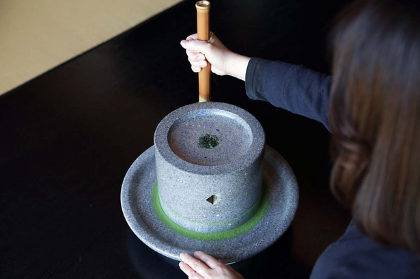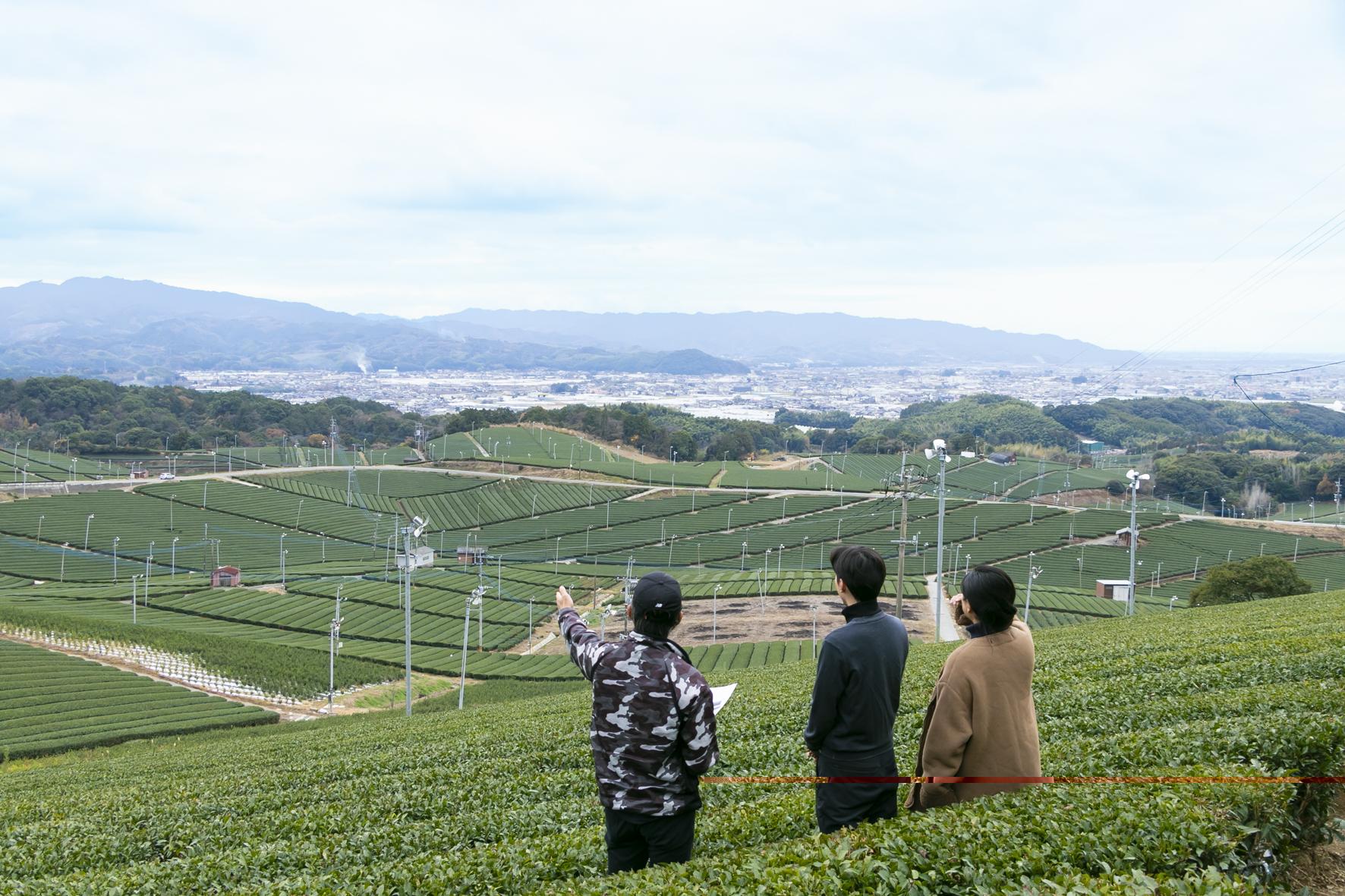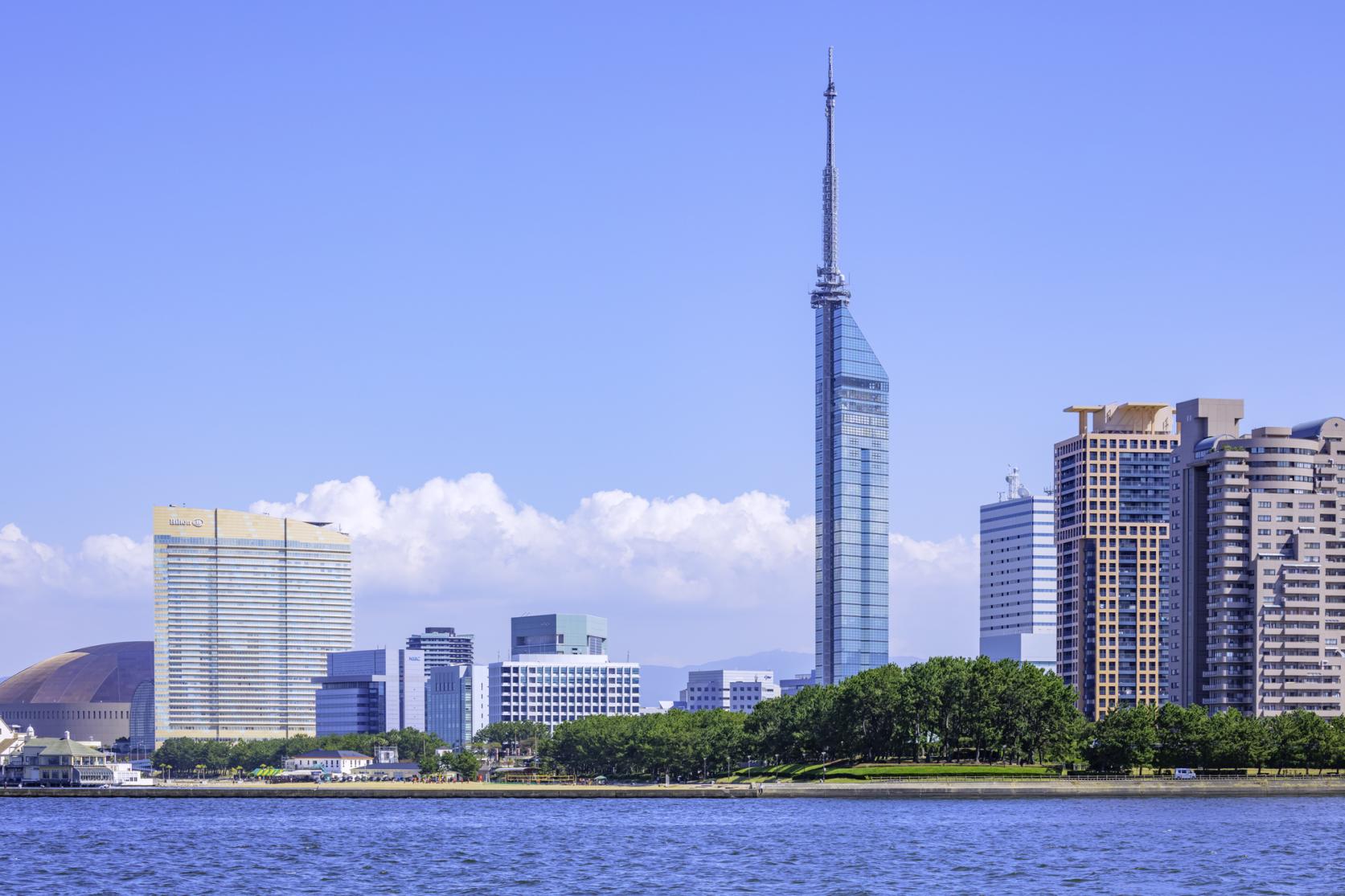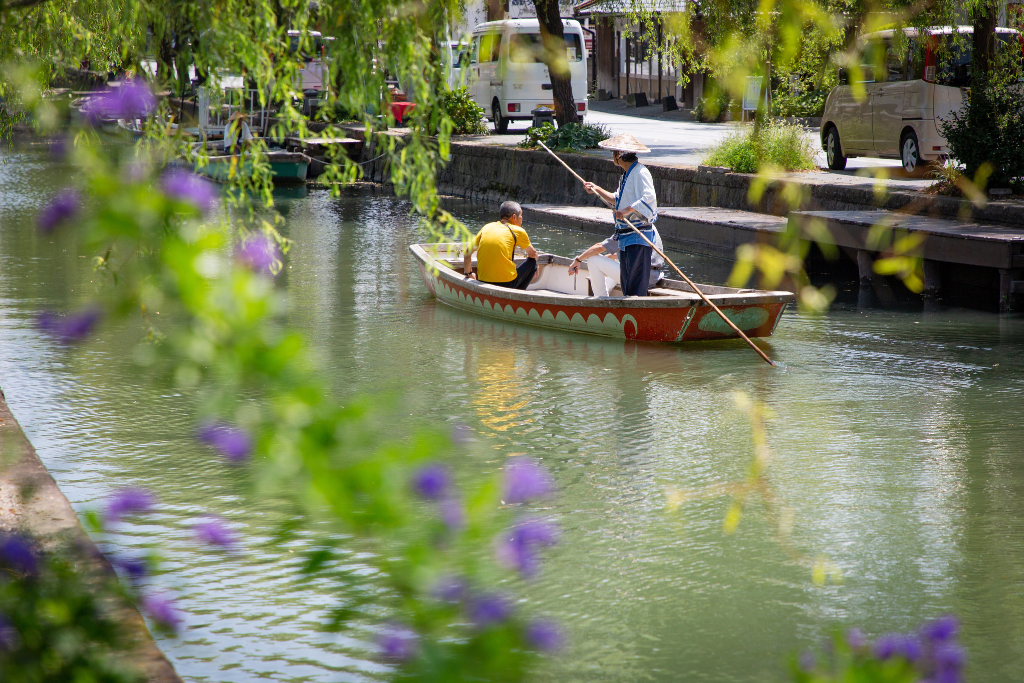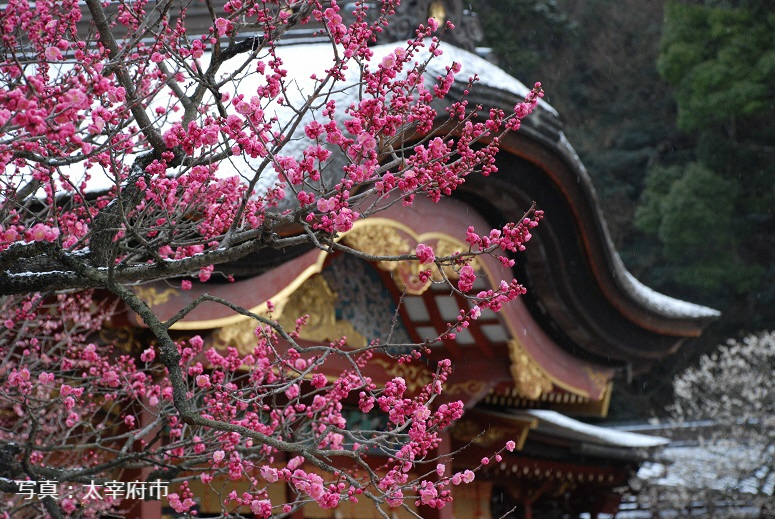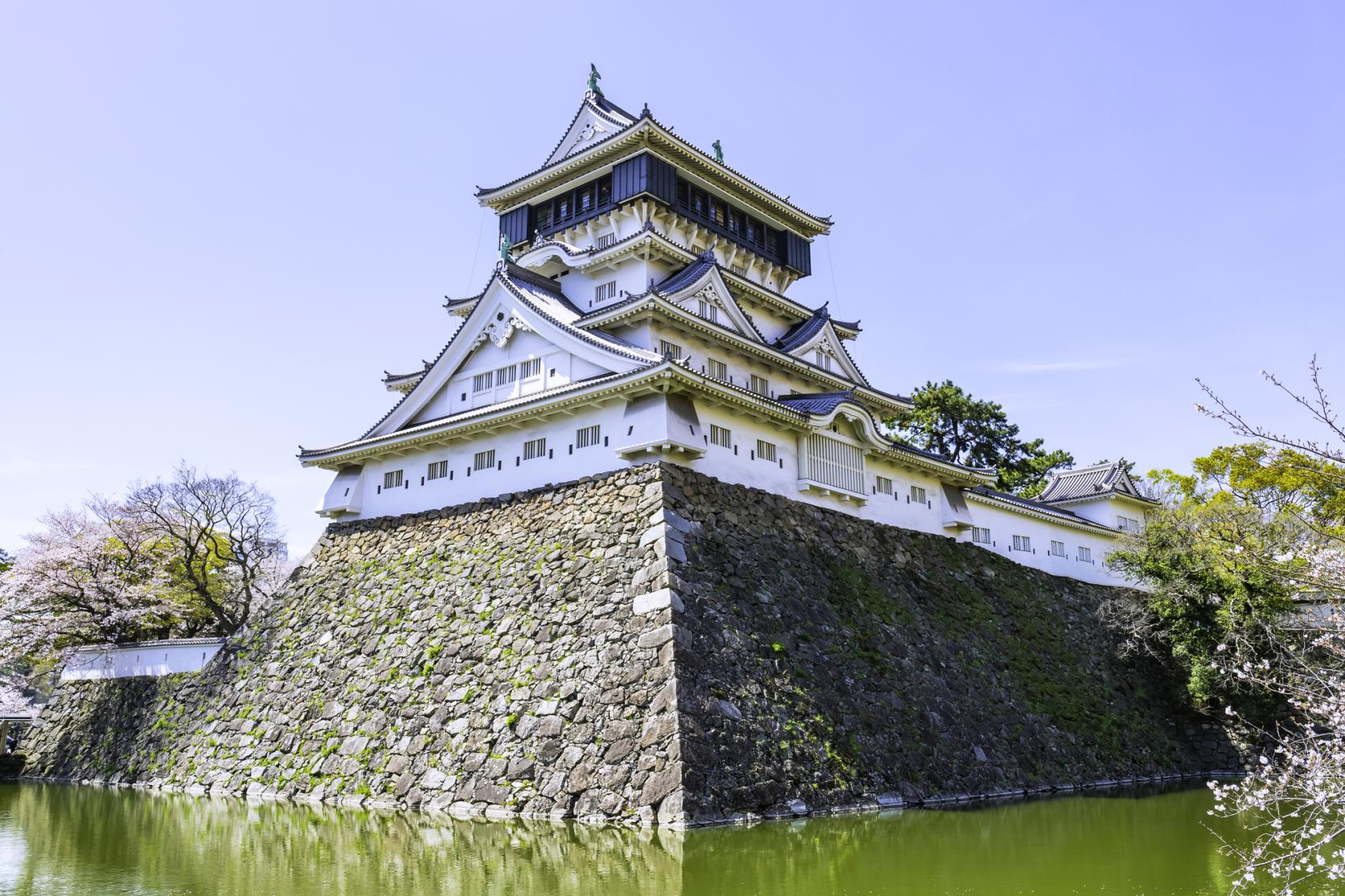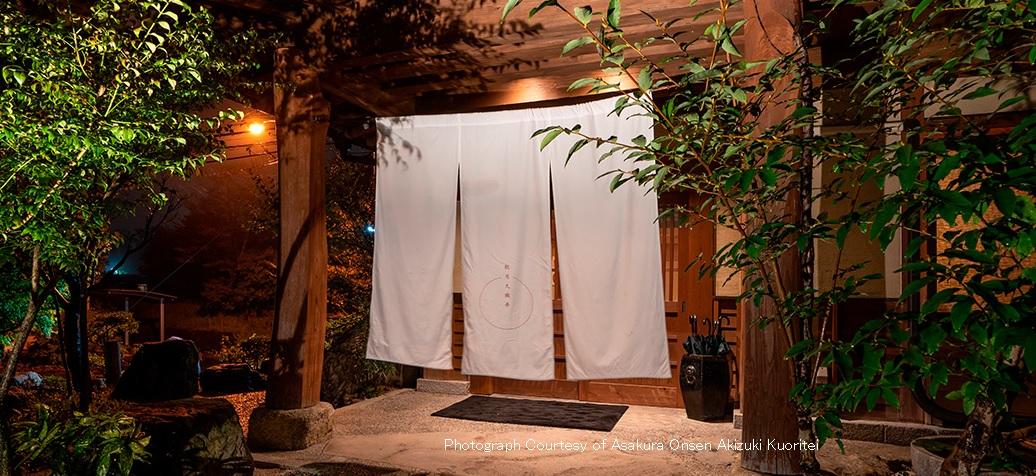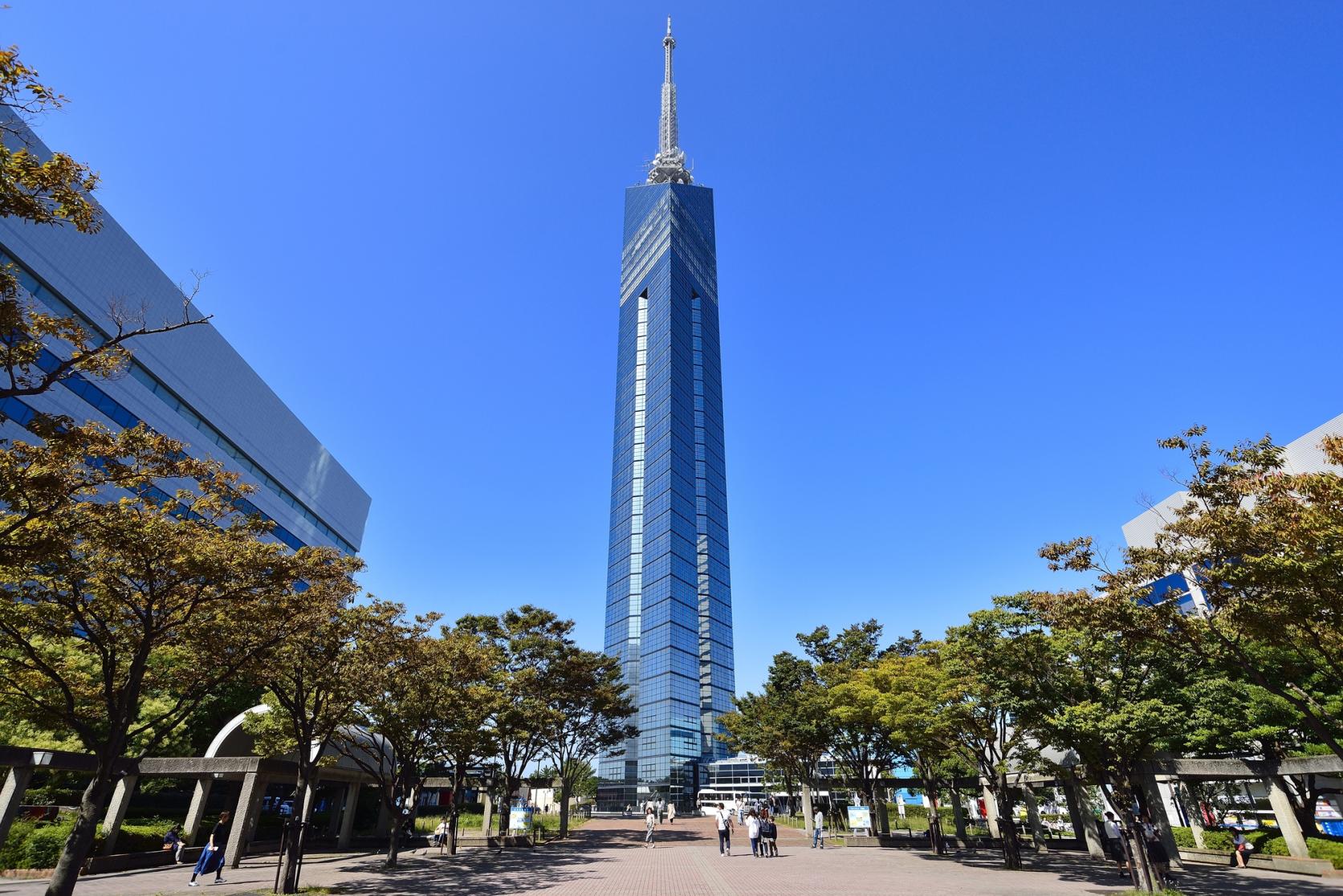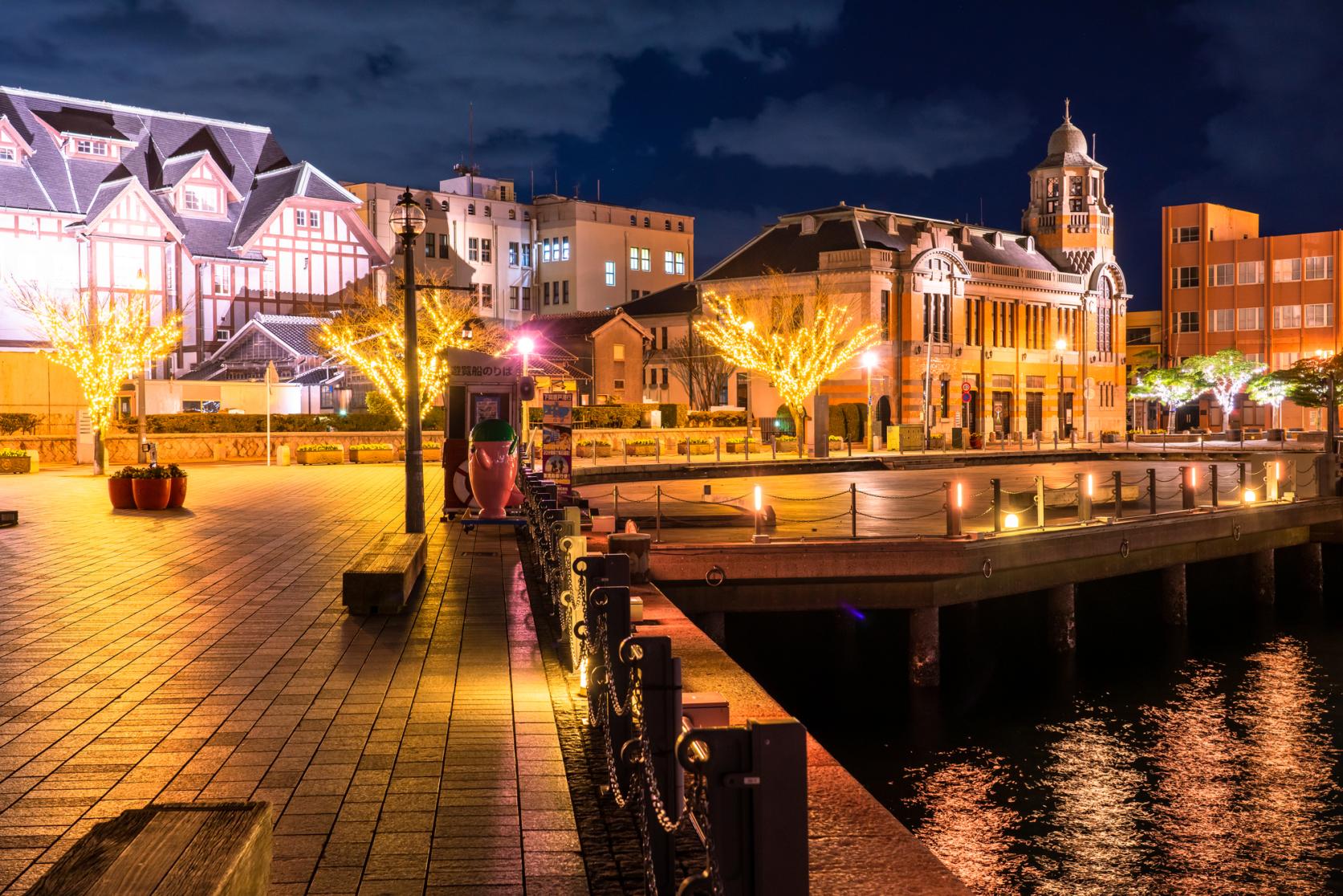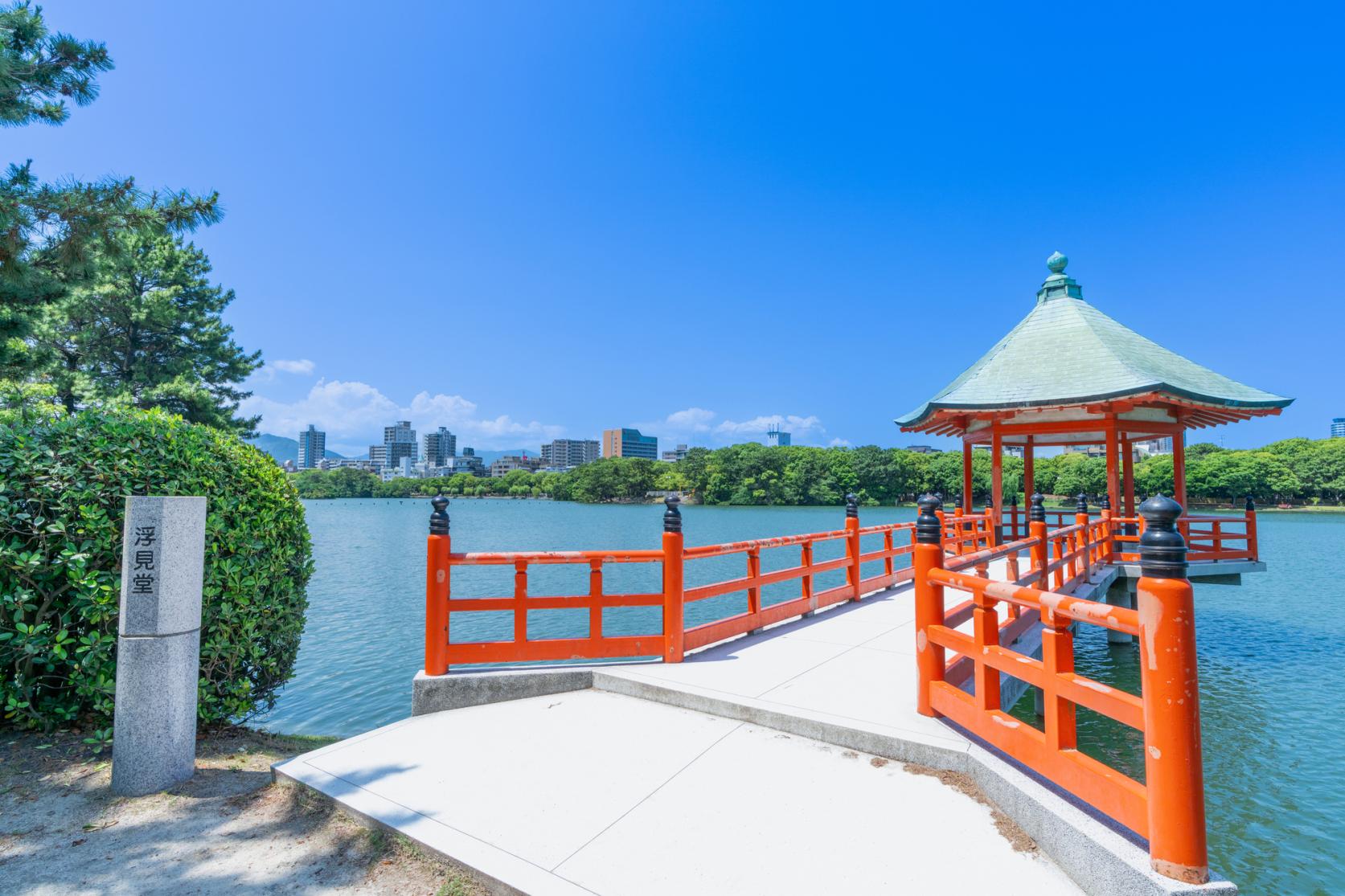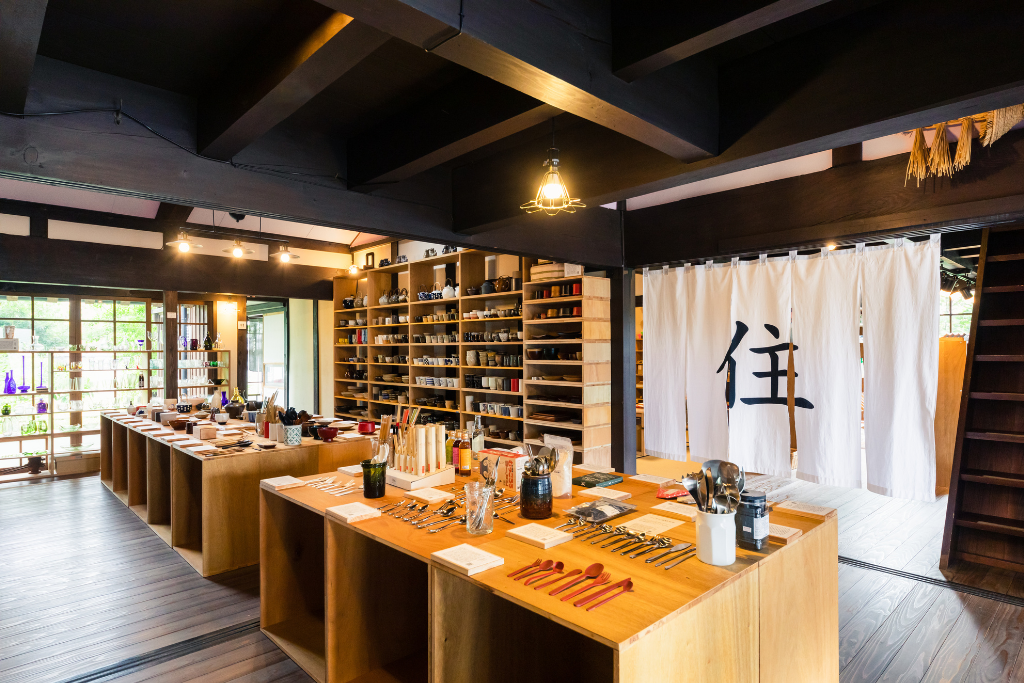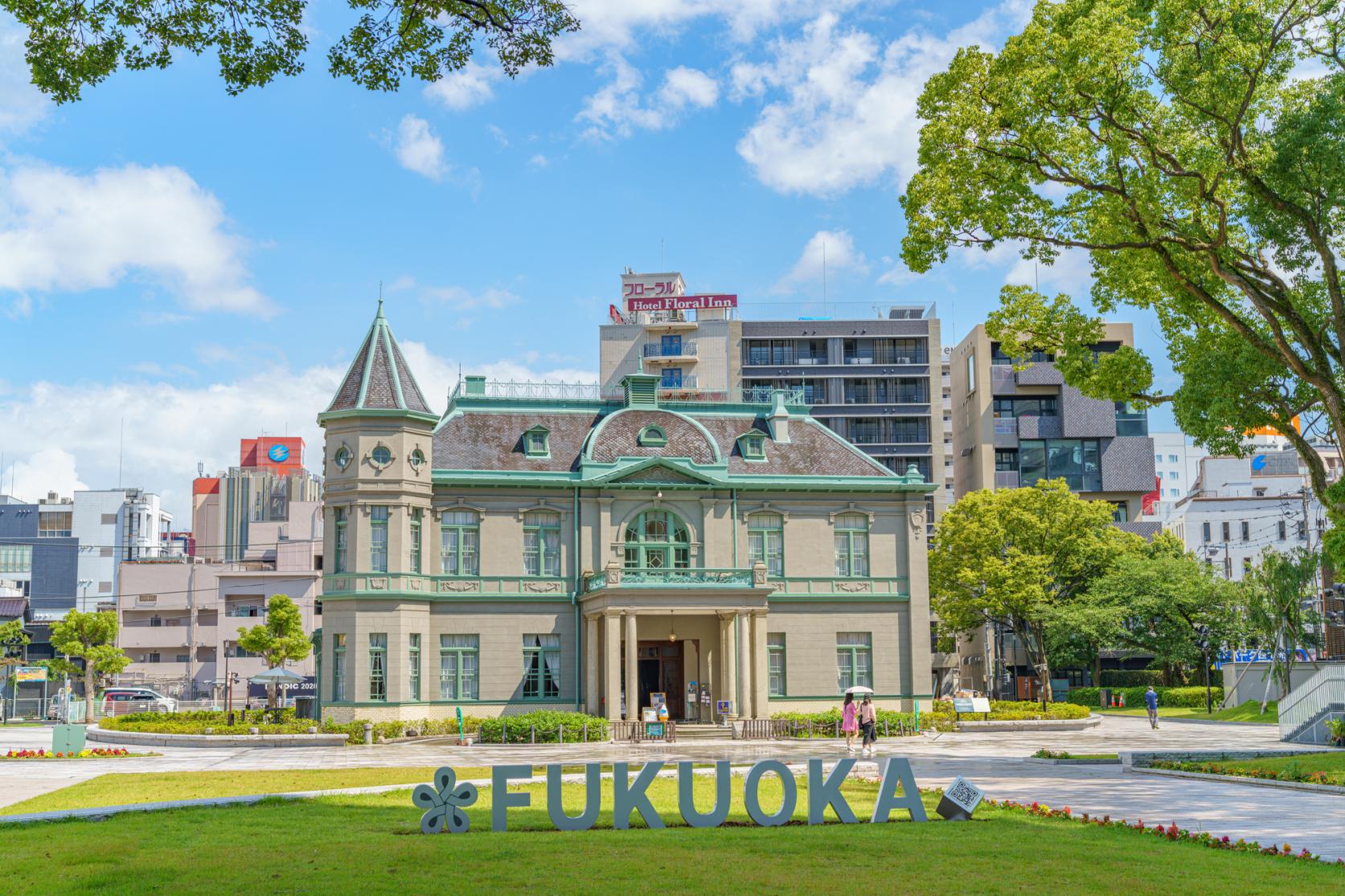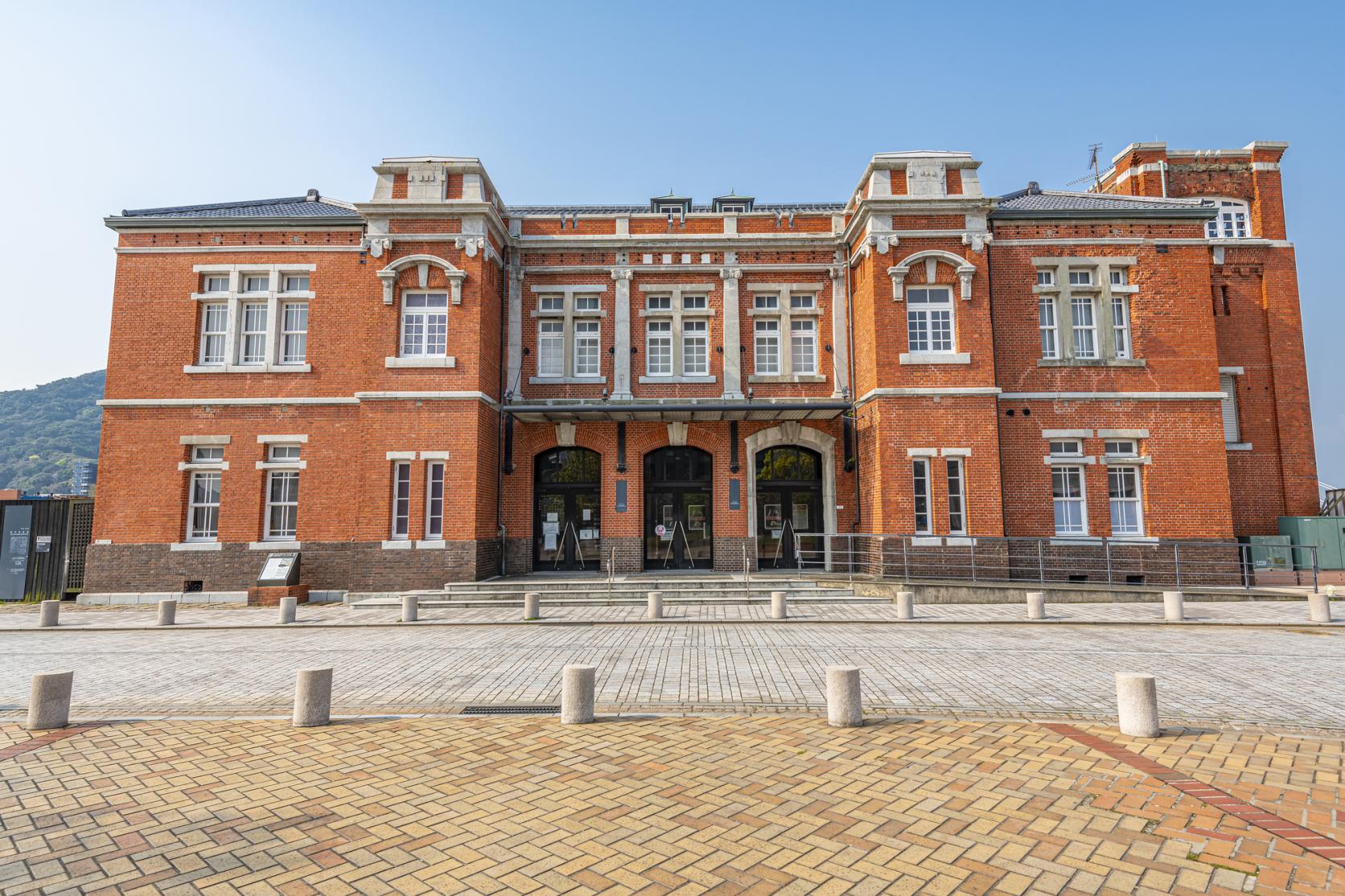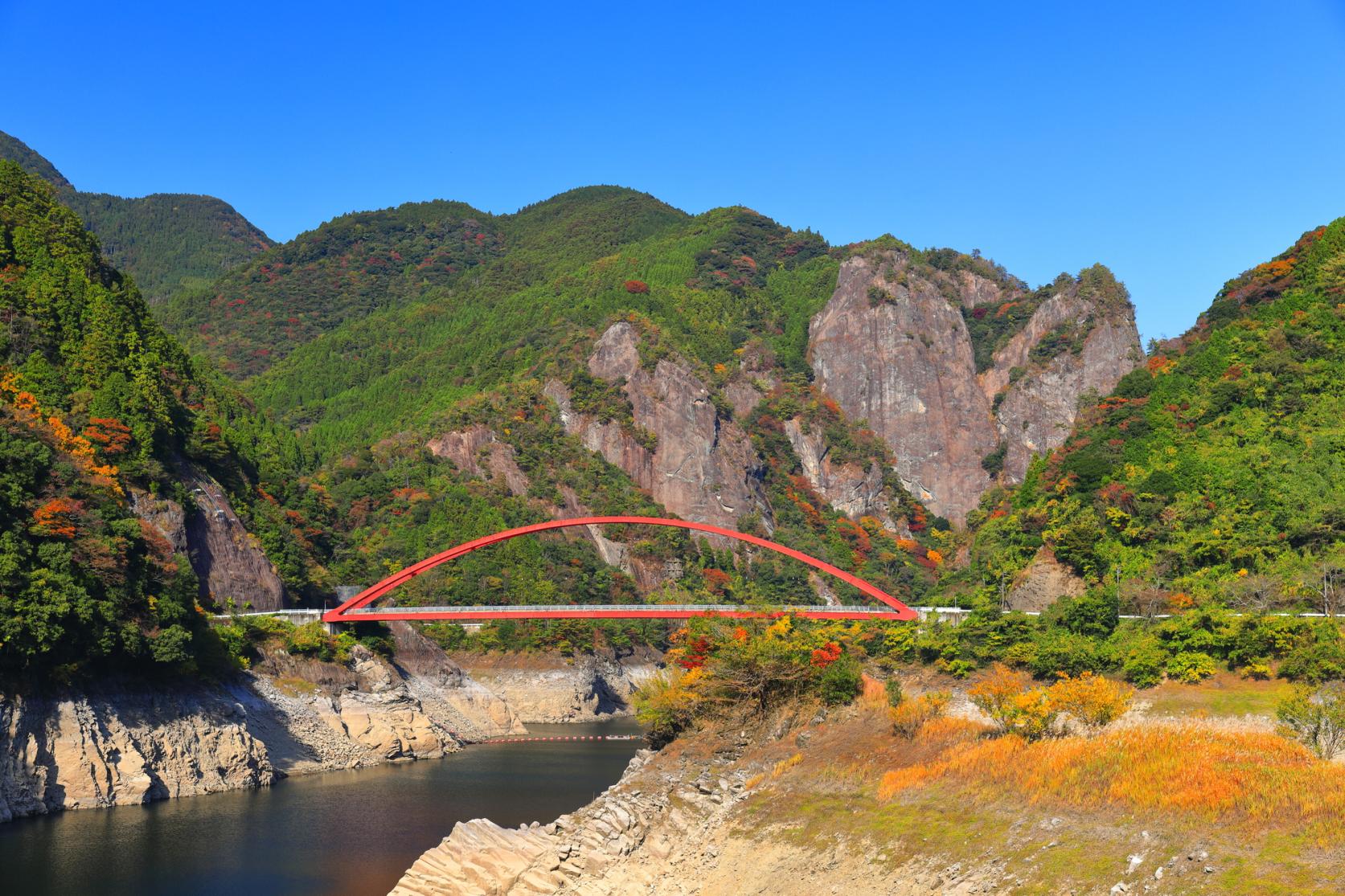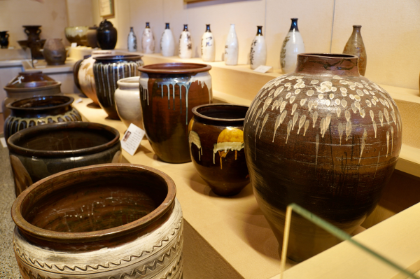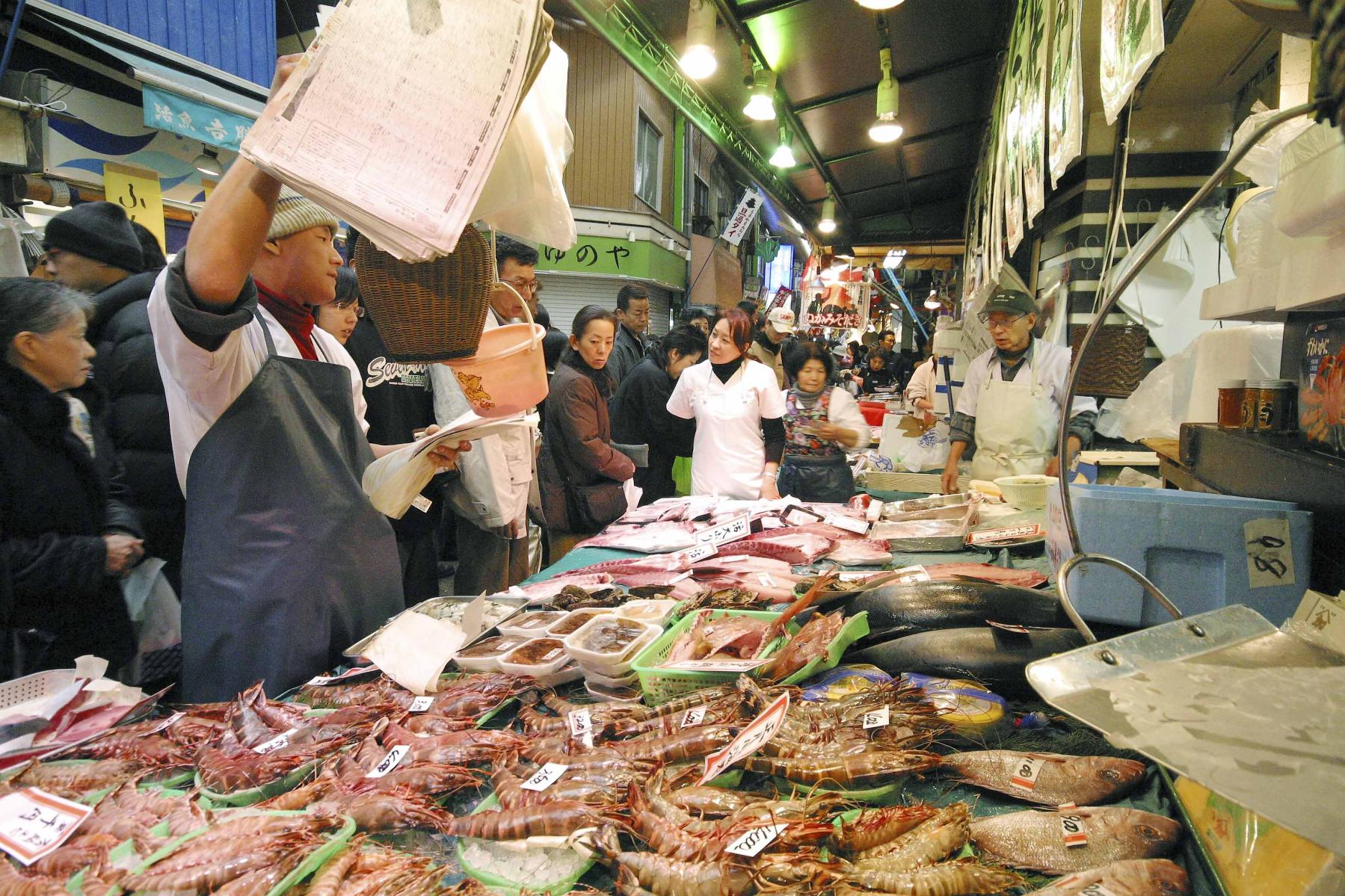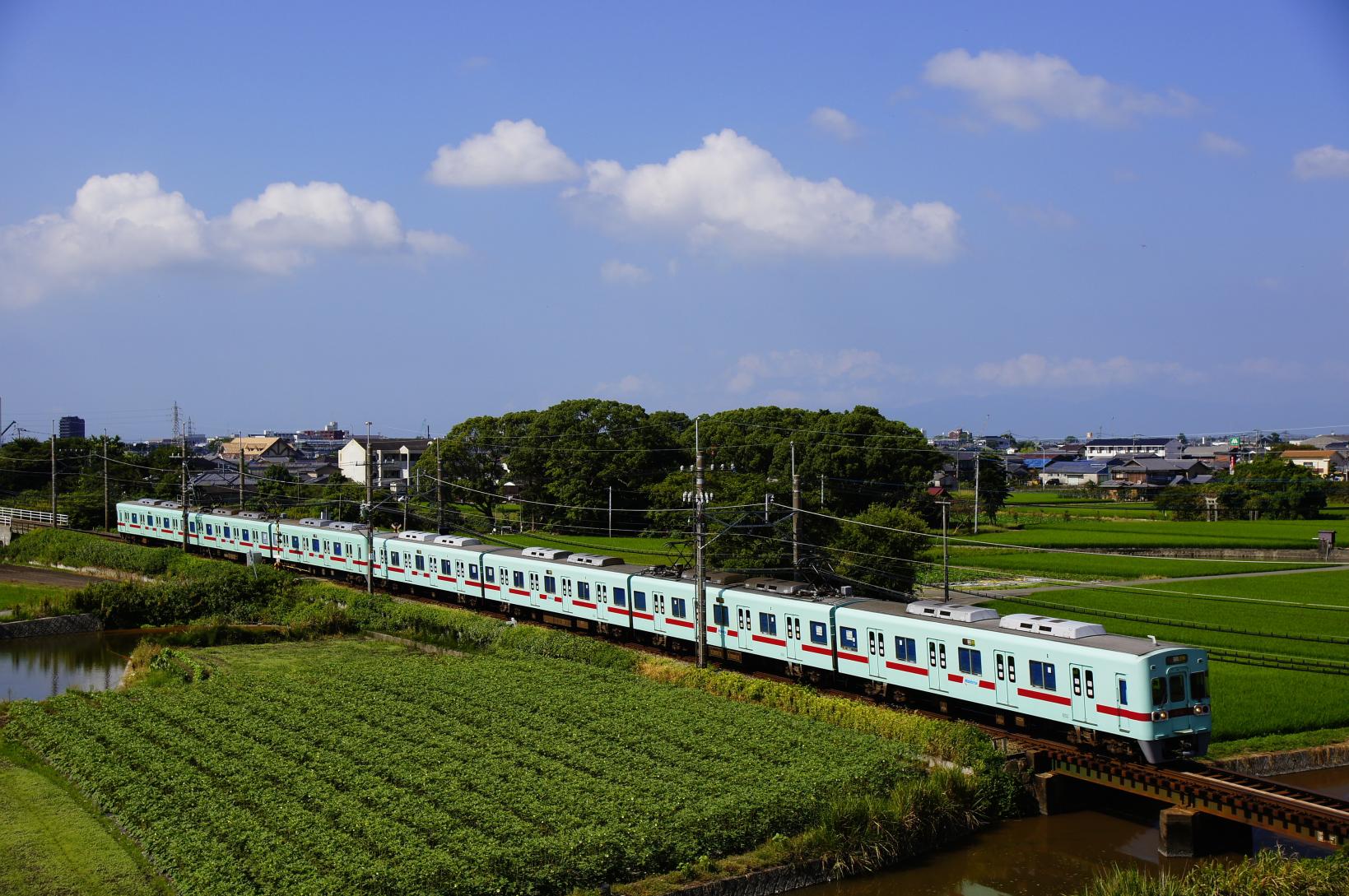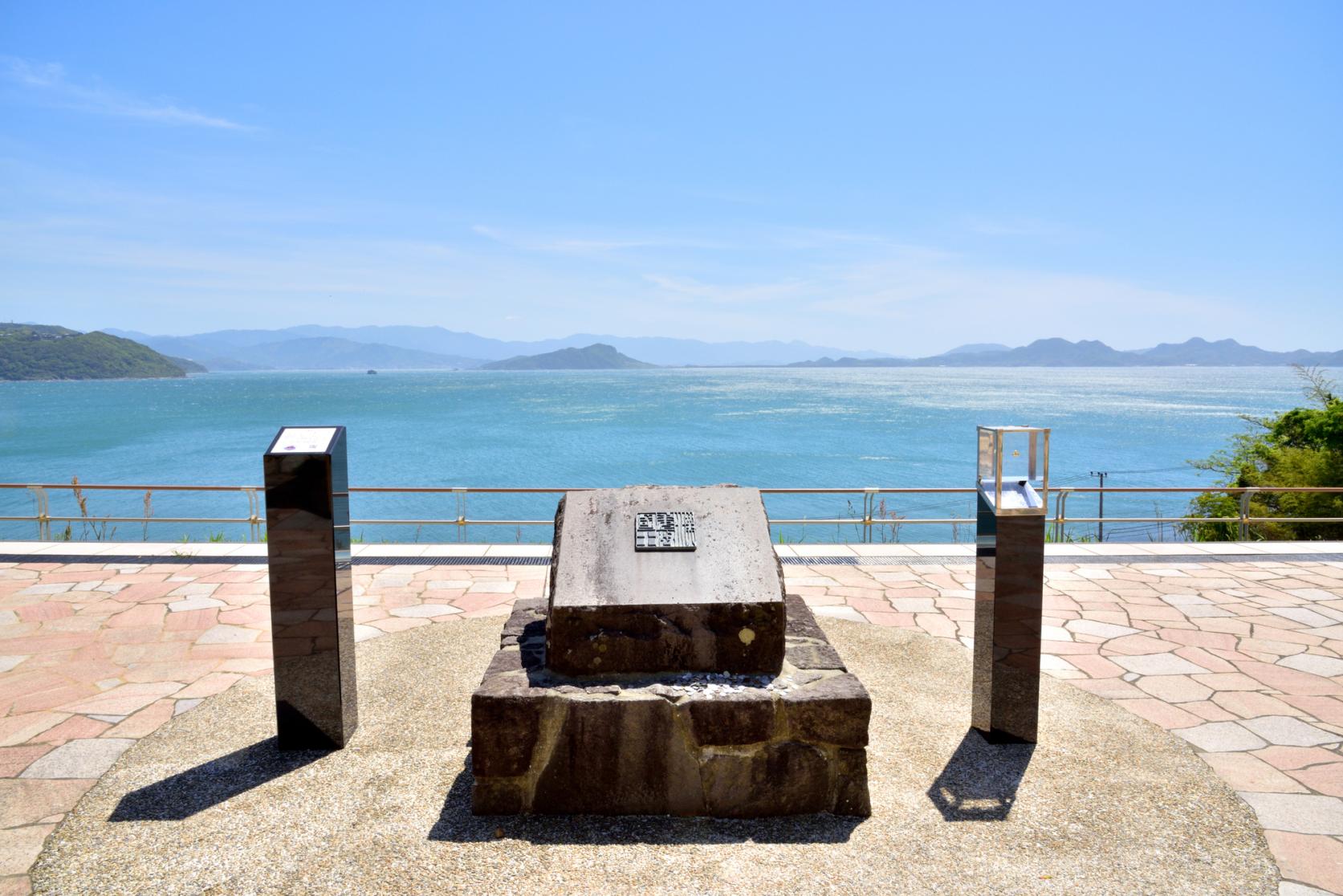We use cookies on this site to enhance your experience. By continuing to browse, you agree to our use of cookies. See our Cookie Policy for more information.
 3-day tour of Fukuoka and Kumamoto: An architectural and art tour—Enjoy the beauty of the old and the new
3-day tour of Fukuoka and Kumamoto: An architectural and art tour—Enjoy the beauty of the old and the new
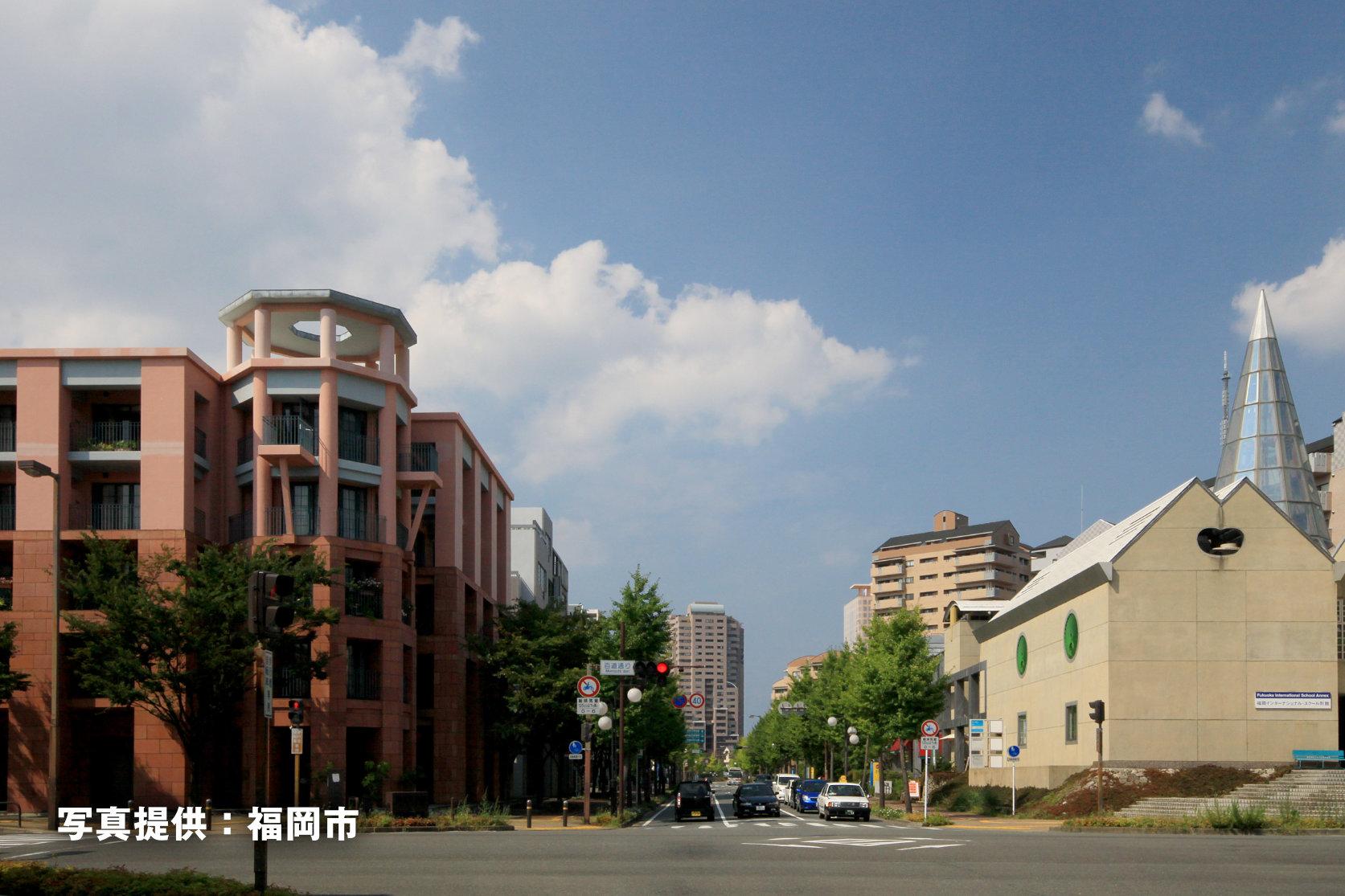
This itinerary takes you on a tour to explore both traditional and contemporary architectural beauty. In Kumamoto, you can experience the traditional beauty of Japan with visits to Kumamoto Castle, which was said to be impregnable, and Suizenji Jojuen Garden, which has retained its appearance from the Edo period (1603-1868). In Fukuoka, you can admire buildings designed by famous architects as well as modern Asian art.
- Days required
- 3 Days
- Transport Options
- Bus / Train / Walking
START
Approximately 30 minutes by bus from Kumamoto Airport
[Day 1] Suizenji Jojuen Garden
The beauty of a Japanese garden, with spring waters and a man-made hill modeled on Mt. Fuji
![[Day 1] Suizenji Jojuen Garden](https://www.crossroadfukuoka.jp/storage/special_feature_paragraph_contents/6804/responsive_images/UAgc5dgPmoBKd8LLxCB29AWqCqu0bMGM19pMwyG0__1673_1115.jpg)
This is a circuit-style garden that was built in the 17th century by the Hosokawa family, who were lords of the Kumamoto domain. The garden is centered around a pond fed by underground water from Mt. Aso, and features a man-made hill that is said to be modeled on Mt. Fuji, as well as a stone bridge, allowing visitors to enjoy the beautiful scenery of the four seasons. In spring, the cherry blossoms along the walking paths are in full bloom, and the garden becomes crowded with visitors enjoying the blossoms.
Approximately 20 minutes by Kumamoto City Tram from Suizenji Park to Kumamoto Castle/City Hall
[Day 1] Kumamoto ramen (Lunch)
Mellow tonkotsu soup with the scent of garlic
![[Day 1] Kumamoto ramen (Lunch)](https://www.crossroadfukuoka.jp/storage/special_feature_paragraph_contents/6805/responsive_images/9IyznK5CpFeKTRcMDpWc2d3dcEwoEI9Mjg6VmI7O__1673_1115.jpg)
This is one of the most famous tonkotsu ramen (noodles cooked in pork bone broth) in Kyushu. While it uses pork bones like Fukuoka ramen, it has a more mellow and creamier flavor. The soup also has a deep richness and a savory aroma, thanks to the fried garlic chips and garlic oil known as mayu. Enjoy the difference in flavor from Hakata ramen.
(Around the area)
[Day 1] Kumamoto Castle
A famous impregnable castle that boasts impressive stone walls
![[Day 1] Kumamoto Castle](https://www.crossroadfukuoka.jp/storage/special_feature_paragraph_contents/6806/responsive_images/tjUzSHJmQ51ielK9vspYRI4zaXsMce1y7gtjidAE__1673_1115.jpg)
Kumamoto Castle, with its Daitenshu (main castle tower) and Shotenshu (small castle tower) standing side by side, was built in 1607 by the famous general Kato Kiyomasa. Known as one of Japan's three most famous castles, it is characterized by its vast grounds and robust stone walls, and is excellently designed for defense against war. In spring, around 800 cherry trees bloom in the area around the castle, making it a popular place for the people of Kumamoto Prefecture to relax.
Although the castle suffered extensive damage in the 2016 Kumamoto earthquake, restoration work has progressed. Tenshukaku has been rebuilt and is now open to visitors, once again revealing its beauty as a symbol of earthquake recovery.
Approximately 10 minutes on foot
[Day 1] SAKURA MACHI Kumamoto
A base for sightseeing in Kumamoto, with plenty of shopping and dining options!
![[Day 1] SAKURA MACHI Kumamoto](https://www.crossroadfukuoka.jp/storage/special_feature_paragraph_contents/6807/responsive_images/KlEHklZwtHRtsxzzGXfAudwXdD1wLM48kSIrwp57__1673_1115.jpg)
This is a large-scale complex that was created as a landmark in the Sakuramachi district of Kumamoto City. On the top floor positioned about 30 m above the ground, there is a garden and park filled with a variety of plants to create a sense of the four seasons, based on the concept of ensuring continuity between Kumamoto Castle and the garden. When you feel tired from your walk, take a break in this lush green space.
Approximately 15 minutes on foot
[Day 1] Kumamoto Food Stall Village
This is the place for a perfect night out in Kumamoto! Savor Kumamoto's gourmet food on a bar hopping tour
![[Day 1] Kumamoto Food Stall Village](https://www.crossroadfukuoka.jp/storage/special_feature_paragraph_contents/6808/responsive_images/tB9qAwkqOdaCL5hLPdhtl1FTiQUZ5ibzigwkSxdd__1673_1115.jpg)
A food stall village with a retro atmosphere, where all of Kumamoto's gourmet food comes together under one roof. Enjoy local cuisine and dishes that make the most of local ingredients, served up by stalls set out in this alley-style location, so you can go from stall to stall sampling food of different genres.
There is also a vending machine that allows you to try out shochu from all 27 distilleries in Kumamoto, as well as a digital tourist information center.
[Accommodations]Within Kumamoto City
![[Accommodations]Within Kumamoto City](https://www.crossroadfukuoka.jp/storage/special_feature_paragraph_contents/6809/responsive_images/rOhrL6J0llRRRj7OT1GmyZjthTIyzrdz7CK0exmJ__1673_1113.jpg)
Approximately 70 minutes by Kyushu Shinkansen to JR Hakata Station
Approximately 30 minutes to Nishitetsu Dazaifu Station
[Day 2] A stroll along the Dazaifu sando (approach)
A walk along a charming and picturesque sando
![[Day 2] A stroll along the Dazaifu sando (approach)](https://www.crossroadfukuoka.jp/storage/special_feature_paragraph_contents/6810/responsive_images/ICSJnbU40F93Yi76thZfsP9XgEegyjlcAVwcTCg2__1580_1053.jpg)
The stone-paved sando (approach) to Dazaifu Tenmangu Shrine is lined with shops that incorporate traditional wooden architecture and modern design.
The famous umegae mochi (mochi filled with red bean paste and baked to a golden brown) are perfect for eating on the go. Stop by the stylish cafes and gift shops and enjoy a leisurely stroll along the sando.
Along the sando (approach)
[Day 2] Starbucks Coffee, Dazaifu Tenmangu Omotesando Store
Enjoy a coffee break at an artistic shop that blends in with the sando
![[Day 2] Starbucks Coffee, Dazaifu Tenmangu Omotesando Store](https://www.crossroadfukuoka.jp/storage/special_feature_paragraph_contents/6811/responsive_images/PmMZIpYbD1rXDMHoH7pUK1dtH02fQTRBF4VzbQxz__1734_1157.jpg)
This store was designed by the world-famous architect Kengo Kuma. It is characterized by a bold and innovative design that fuses modern technology with traditional timber. The half-timbered structure, which appears to have been woven, creates a visually dynamic space that forms a part of the interior. This cafe looks perfect on social media, so don't miss it!
Along the sando (approach)
[Day 2] Wagyu Mentai Kagura (Lunch)
The birthplace of the wagyu mentai gozen
![[Day 2] Wagyu Mentai Kagura (Lunch)](https://www.crossroadfukuoka.jp/storage/special_feature_paragraph_contents/6812/responsive_images/NRKyKztcLBxwknxPO4Yqb3vxVJyr9mdDc3VPqhFz__1728_1152.jpg)
The signature dish, wagyu mentai gozen, is a superb dish made with a luxurious combination of kuroge wagyu beef from Kyushu and mentaiko (spicy cod roe) from the long-established FUKUYA brand. Enjoy the unique flavors of Fukuoka in this century-old building restored with contemporary interiors.
[Day 2] Dazaifu Tenmangu Shrine
The architectural style from the Momoyama period that shines through the ages
![[Day 2] Dazaifu Tenmangu Shrine](https://www.crossroadfukuoka.jp/storage/special_feature_paragraph_contents/6813/responsive_images/bYcUiV9GHNXjhw43YUwFBl8fB7UcOeNUPz56VT0N__1673_1115.jpg)
This is a shrine dedicated to the god of learning, Sugawara no Michizane. As the sohongu (head shrine) of all Tenmangu shrines in Japan, it is visited by many worshippers from Japan and overseas.
The gohonden (main shrine), which is painted vermillion, was rebuilt in 1591 and features gorgeous decorations in the style of the Momoyama period (1573-1615). Built with traditional wooden architectural techniques, this has been designated an Important Cultural Property of Japan.
*The gohonden is currently undergoing renovation work until around 2026.
| Telephone Number | 092-922-8225(問い合わせ対応時間/9:00~17:00) | |
|---|---|---|
| Open | Dazaifu Tenmangu Shrine Opening times. 6:30am-7:00pm (varies according to season and facility) New Year opening and closing times (31 Dec - 4 Jan) The gates open at 6:30 on 31 December and 24 hours on the three New Year's days. The gates close on the evening of 4 January, depending on the number of worshippers. Prayers are accepted from around 8:45am until around 5:00pm. Treasure House and Suga Lord History Museum 9:00am-4:30pm (admission until 4:00pm). | |
| Closed | Dazaifu Tenmangu Shrine. None The Treasure House Mondays (open if Monday is a public holiday) Suga-ko History Museum Tue, Wed |
Approximately 10-minute walk (Rainbow Tunnel)
[Day 2] Kyushu National Museum
The architecture is a must-see! A museum with a distinct sense of beauty in its curves
![[Day 2] Kyushu National Museum](https://www.crossroadfukuoka.jp/storage/special_feature_paragraph_contents/6814/responsive_images/9PAQQBN6lFCXZAsxCWcLnEkmMZaiarHWJqYQ3KmU__1673_1115.jpg)
Opened in 2005 as Japan's fourth national museum, it holds exhibitions on the theme of the history of cultural exchange between Japan and Asia.
The building is characterized by its double-skin glass facade and curved roof. It is a contemporary design that blends in with the surrounding nature.
| Telephone Number | 050-5542-8600(ハローダイヤル) | |
|---|---|---|
| Open | 9:30am-5pm (admission until 4:30pm) *Fridays and Saturdays during the special exhibition period: 9:30am - 8pm (admission until 7:30pm) | |
| Closed | Every Monday (The following day in the event of a National Holiday) |
Approximately 10-minute on foot to Nishitetsu Dazaifu Station, and 22-minute by train to Fukuoka (Tenjin) Station.
Transfer to the Fukuoka City Subway Airport Line and take a train for about 1 minute from Tenjin Station to Nakasu-Kawabata Station.
The museum is directly connected to the station.
[Day 2] Fukuoka Asian Art Museum
Experience the creativity of Asia, which stands at the forefront of contemporary art
![[Day 2] Fukuoka Asian Art Museum](https://www.crossroadfukuoka.jp/storage/tourism_attractions/12674/responsive_images/16SBik77kbsmplDPTN34uJkTiTmt1RILZ7YeWXqc__1629_1086.jpg)
This is the only museum in the world that specializes in modern Asian art. It houses and exhibits paintings, sculptures, film works, etc., with a focus on contemporary art from various Asian countries. It also holds events and workshops that offer the opportunity of interacting with artists.
| Telephone Number | 092-263-1100(福岡アジア美術館) | |
|---|---|---|
| Open | 10am - 8pm (No admissions after 7:30pm) *Some special exhibitions may close earlier on their last day. | |
| Closed | Wednesdays (Thursday in the event of a National Holiday); December 26 - January 1 |
Approximately 10 minutes on foot
[Day 2] Hakata and Tenjin (yatai)
Savor authentic flavors, from classics to creative dishes, at the yatai
![[Day 2] Hakata and Tenjin (yatai)](https://www.crossroadfukuoka.jp/storage/tourism_attractions/12645/responsive_images/3G6MqW3ys0fnHmWkJI0FYIL3lrQlbjIWNdsR3gVy__1673_1116.jpg)
At night, yatai stalls line the riverside in the Tenjin and Nakasu areas. In addition to the standard tonkotsu ramen (noodles cooked in pork bone broth), you can also enjoy a wide range of cuisine such as motsunabe (hot pot of beef or pork offal and vegetables), yakitori (grilled chicken skewers), gyoza, oden, French food and Italian food.
Its appeal also lies in the warm atmosphere that is unique to yatai stalls, which attract both locals and tourists alike.
| Telephone Number | 092-751-3490(福岡市移動飲食業組合) |
|---|
[Accommodations]Within Fukuoka City
![[Accommodations]Within Fukuoka City](https://www.crossroadfukuoka.jp/storage/special_feature_paragraph_contents/6817/responsive_images/5Bed03FvSHvyTZPCDzTC7lBXCLB9pwdZj2WK19Qq__573_382.jpg)
CARGO PASS, which delivers suitcases and hand luggage from partner hotels to the airport, is a convenient service! On your last day, head out on your sightseeing trip hands-free.
Approximately 20 minutes on foot from Nishijin Station on the Fukuoka City Subway
[Day 3] Fukuoka Tower
A landmark in the sky overlooking the sea and the cityscape
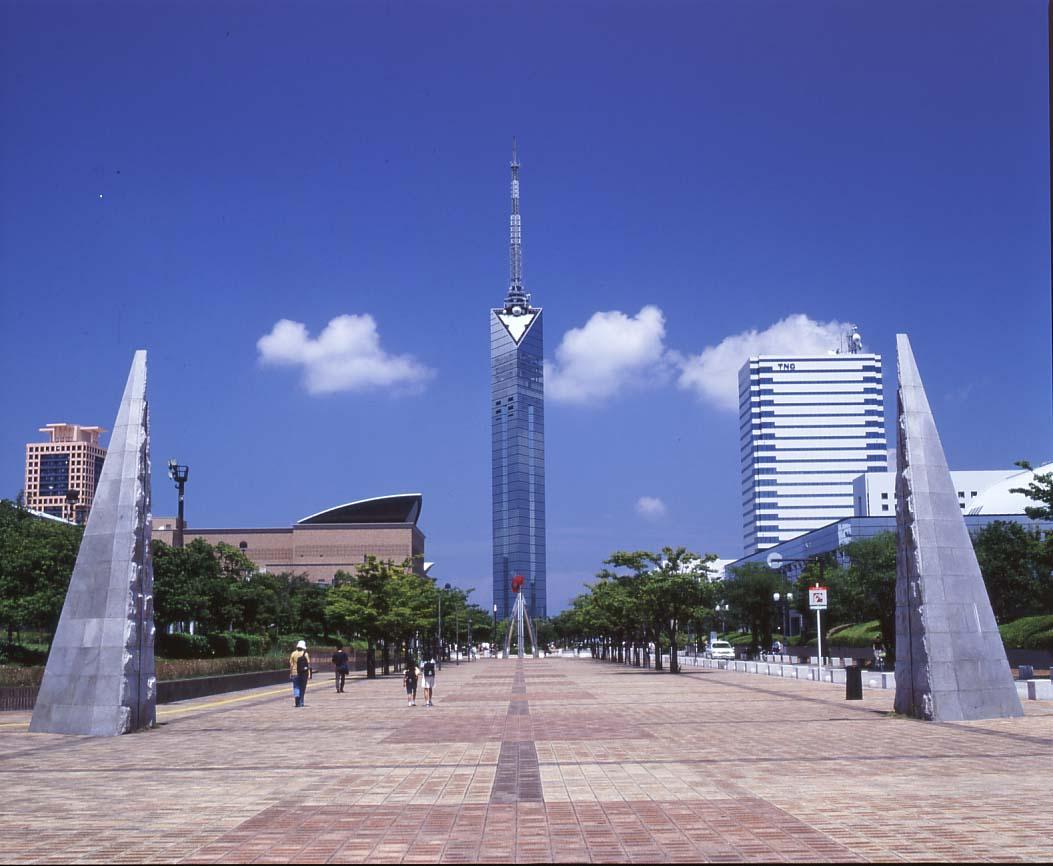
At 234 m tall, it is the tallest seaside tower in Japan. It is characterized by the design of its triangular pillar, which uses around 8,000 pieces of half-mirrored glass panels. From the observation deck, positioned 123 m above the ground with a glass facade all around it, you can enjoy a panoramic view of Fukuoka's cityscape and Hakata Bay.
| Telephone Number | 092-823-0234(福岡タワー(株)) | |
|---|---|---|
| Open | 9:30am - 10pm (9pm from October to March) | |
| Closed | Two days in June (Undetermined) |
Approximately 10 minutes on foot
[Day 3] Street of World Architects
A must-see for architecture lovers! A street that brings together masterpieces by great architects
![[Day 3] Street of World Architects](https://www.crossroadfukuoka.jp/storage/special_feature_paragraph_contents/6819/responsive_images/GXckbJdiBxABKddrsYAM7T6r4YewYWwnberJi8U4__1673_1115.jpg)
The Momochi-hama area, which was created as a part of coastal development works in conjunction with the 1989 Asian-Pacific Exposition (also known as "Yokatopia"), is lined with buildings that feature innovative designs.
The area is dotted with postmodern architectural masterpieces by seven top architects, including the Fukuoka International School Annex designed by Kisho Kurokawa, the Nexus Momochi M Building by Michael Graves, and the Nexus Momochi S Building by Stanley Tigerman. Take a stroll down the street where you will find a collection of unique buildings.
Approximately 10-minute walk to Fukuoka City Subway Fujisaki Station
Approximately 6 minutes by train to Fukuoka City Subway Ohori Park Station
[Day 3] Ohori Park
An urban oasis where you can enjoy taking walks
![[Day 3] Ohori Park](https://www.crossroadfukuoka.jp/storage/tourism_attractions/12492/responsive_images/gjVstaSGN1fW8vhgx7AyahpdYwsMeizTKzk7pVd0__1673_1115.jpg)
The area that used to be the outer moat of Fukuoka Castle has been developed into a park that features a large pond at its center.
We recommend a visit to Fukuoka Art Museum, marked by its modern design by architect Kunio Maekawa, and a tour of the Japanese Garden in the park. There are also cafes, rental boats, and other attractions, making it a popular spot for locals to relax in.
| Telephone Number | 092-741-2004(大濠・西公園管理事務所) | |
|---|---|---|
| Open | Lighting hours / 6:00am-10:00pm daily (7:00pm-10:00pm from Apr-Sep). |
Same area
[Day 3] Ohori Terrace (Lunch)
A comforting lunch accompanied by views of the waterfront
![[Day 3] Ohori Terrace (Lunch)](https://www.crossroadfukuoka.jp/storage/special_feature_paragraph_contents/6821/responsive_images/x5rh8UKWQFaRL1P1uO4i6cnO4FmUffKsxrp3Kmkz__1694_1129.jpg)
This is a popular spot to stop by next to the Japanese Garden. On the first floor is a cafe where you can enjoy set meals and desserts made with Yame tea and local ingredients. Have a relaxing time while enjoying views of the park from the open, glass-walled interior.
Within the same area (approximately 5 minutes on foot)
[Day 3] Japanese Garden at Ohori Park
A Japanese-style space where traditional Japanese beauty lives on
![[Day 3] Japanese Garden at Ohori Park](https://www.crossroadfukuoka.jp/storage/special_feature_paragraph_contents/6822/responsive_images/R2ZtYg5oLh58WmyYzTabveqdz4vFFDbXr4TG8RPT__600_400.jpg)
This is a garden designed in the Tsukiyama Rinsen Kaiyushiki style (a circuit-style garden decorated with hills, waterfalls, and a pond for strolling around). It was created to commemorate the 50th anniversary of the opening of Ohori Park. The site, spanning approximately 12,000 square meters, includes ponds, waterfalls, stone bridges, karesansui (traditional "dry landscape" garden), and a tea house designed in the traditional Japanese sukiya-zukuri architectural style, which together embody the classical beauty of Japan.
| Telephone Number | 092-741-8377(指定管理者:にしてつG・いしはらD公園管理団体) | |
|---|---|---|
| Open | 9am - 5pm | |
| Closed | Mondays; December 29 - January 3 |
Within the same area (approximately 10 minutes on foot)
[Day 3] Fukuoka Castle Ruins
The stone walls tell the story of a great castle of yore
![[Day 3] Fukuoka Castle Ruins](https://www.crossroadfukuoka.jp/storage/special_feature_paragraph_contents/6823/responsive_images/X4FfuyxMyLXDuWQsP1myOqEi1tFEqC0KZR2gUuZk__1673_1115.jpg)
It was built over a period of seven years from 1601. At the time, it was a magnificent castle with large, medium, and small Tenshudai (the main keep) and 47 turrets. The castle ruins are impressive and well worth a look. These include parts of the castle that are still standing, such as Tenshudai, which serves as an observation platform, the Tamon-yagura Turret, the Kinen-yagura Turret, the Shimonobashi-gomon Gate, and the (Den) Shiomi-yagura Turret. The stone walls and layout have remained almost exactly as they were in those days.
| Telephone Number | 092-711-4666(福岡市経済観光文化局 文化財活用部 文化財活用課) | |
|---|---|---|
| Open | Minamimaru Tamon Yagura (turret) front garden 9:00am-5:00pm |
Approximately 10 minutes on foot
Approximately 15 minutes by train from Ohori Park Station on the Fukuoka City Subway
[Day 3] Fukuoka Airport
![[Day 3] Fukuoka Airport](https://www.crossroadfukuoka.jp/storage/tourism_attractions/10760/responsive_images/H2audu1iV0UeM1Q2FMpiTCxZ3ovpLFlW9fwX8cZK__800_463.jpg)
GOAL
Google Maps may not display correctly if left open for more than 1 day


